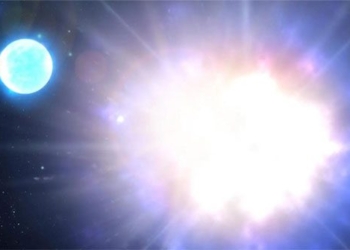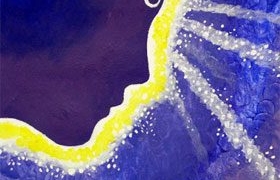We may be witnessing several “planet-eating” entities that once devoured planets right in the sky above Earth.
A research team from Australia, the United States, and Ireland, led by Dr. Fan Liu from Monash University (Australia), has examined 91 pairs of twin stars and identified several “planet-eating predators” that are quite alarming.

A planet being eaten by a “predatory” star – (Graphic: PHYS)
This data on these star pairs was collected using four advanced tools, namely the European Space Agency’s (ESA) Gaia Sky Mapping Satellite, the Very Large Telescope of the European Southern Observatory (ESO), the Magellan Telescope (Chile), and the Keck Observatory (Hawaii, USA).
According to a publication in the scientific journal Nature, they discovered that 8%, or 1 in 12, of the stars in these 91 pairs have previously consumed several planets during their lifetimes!
This is evident through the compositional differences between the predatory star and its companion.
Two twin stars should be identical in terms of chemical composition, which can be revealed through spectral data. When one star no longer resembles its twin, it must have interacted with something significant.
Swallowing a planet is almost the only way to create such a noticeable difference.
“The findings imply that stable planetary systems like our Solar System are not the norm. This gives us deeper insight into our place in the universe,” said Dr. Yuan-Sen Ting from the Australian National University in Canberra, a co-author of the study, to Space.com.
A planet-eating star is not a rare phenomenon, but it was previously thought to occur only when the star is dying, swelling into a red giant.
In about 5-6 billion years, our Sun will run out of energy and become a red giant, expected to swallow the three closest planets: Mercury, Venus, and Earth.
However, the stars in the aforementioned 91 twin pairs are in their prime, youthful stage. This means they exhibit predatory behavior while still relatively young or “middle-aged.”
The devoured planets may have different origins, but it is highly likely that they are not “children” of the stars themselves, but rather rogue planets ejected from other star systems, which then wander close and get consumed.
There is also a possibility that these planets swallowed incomplete protoplanets early in their life cycles, rather than fully formed planets.
Regardless of the scenario, they remain formidable predators.





















































